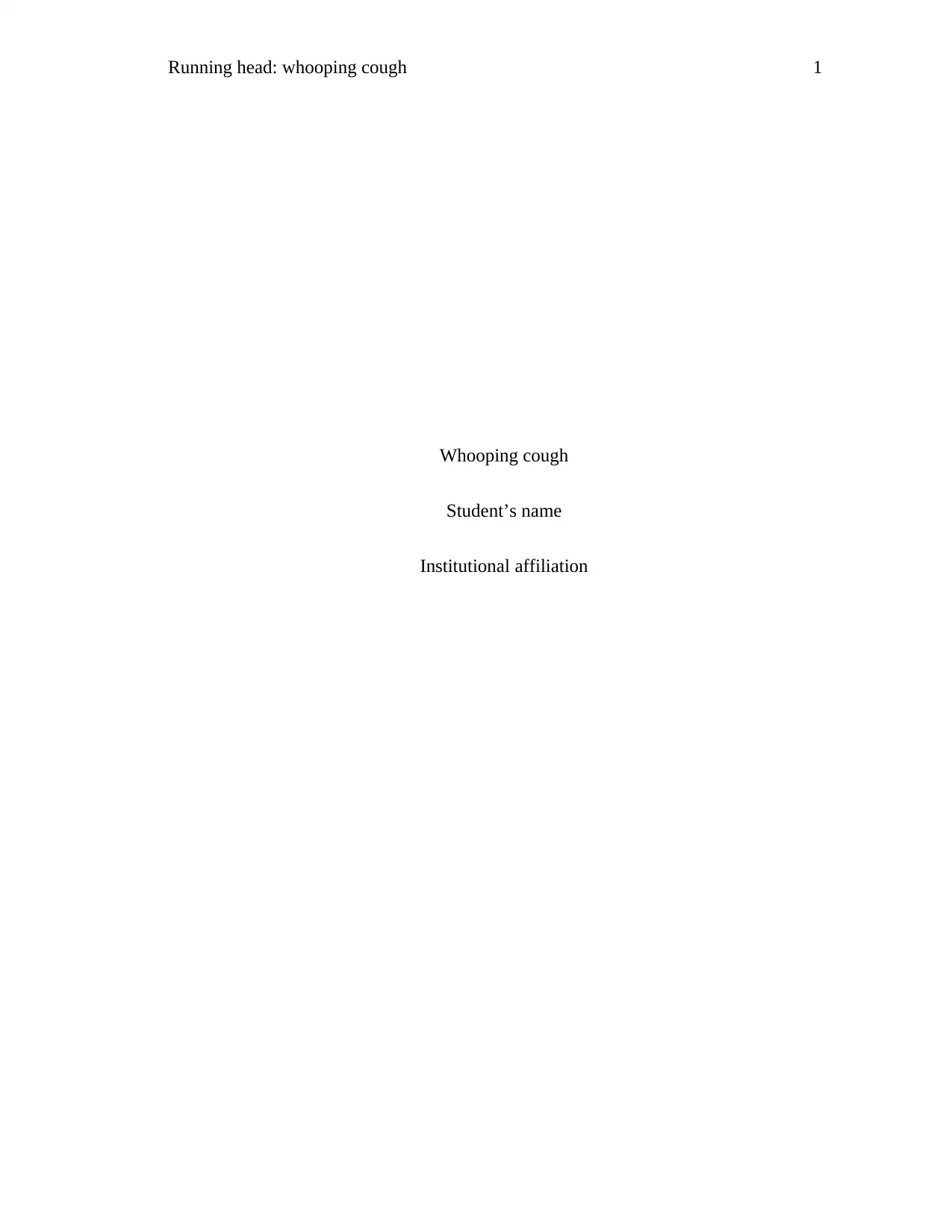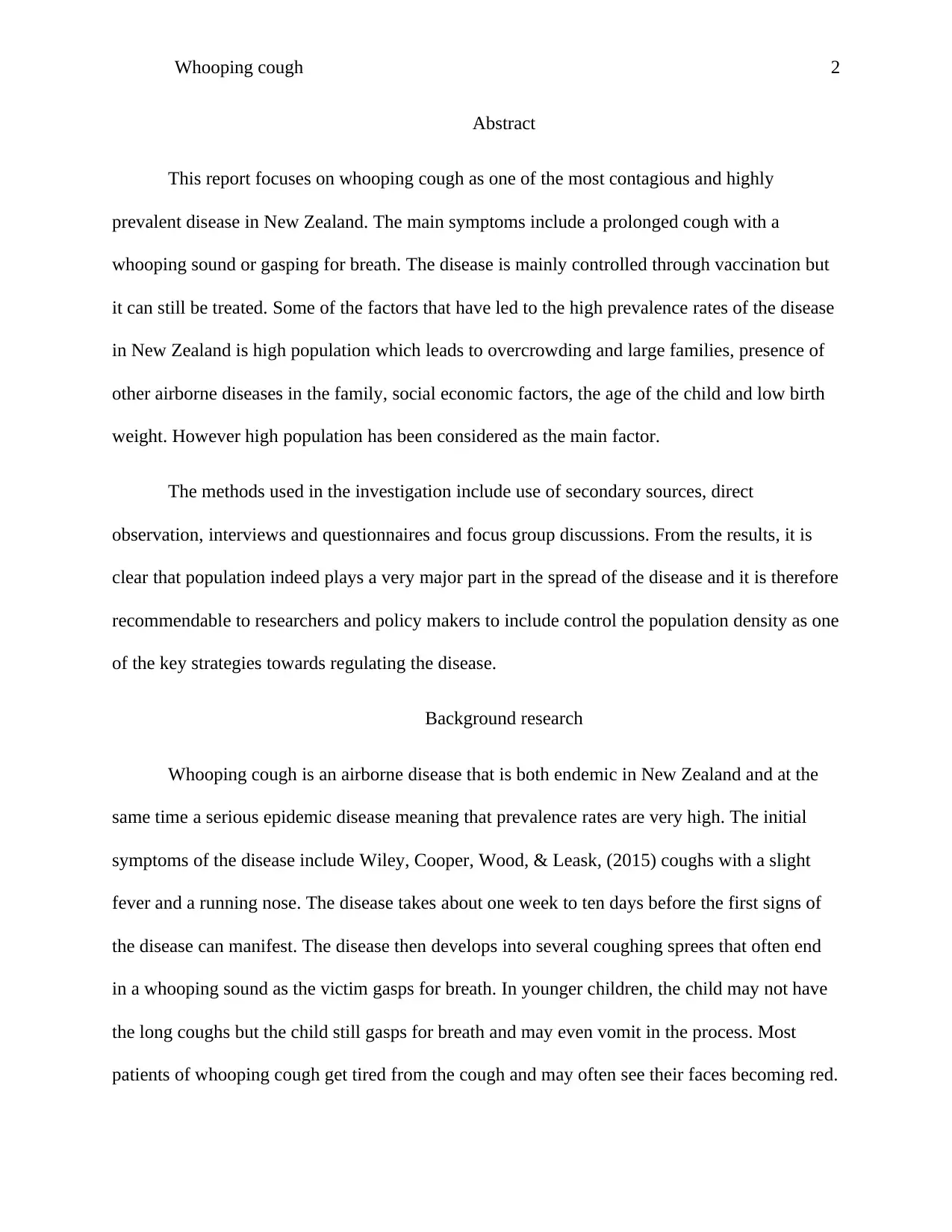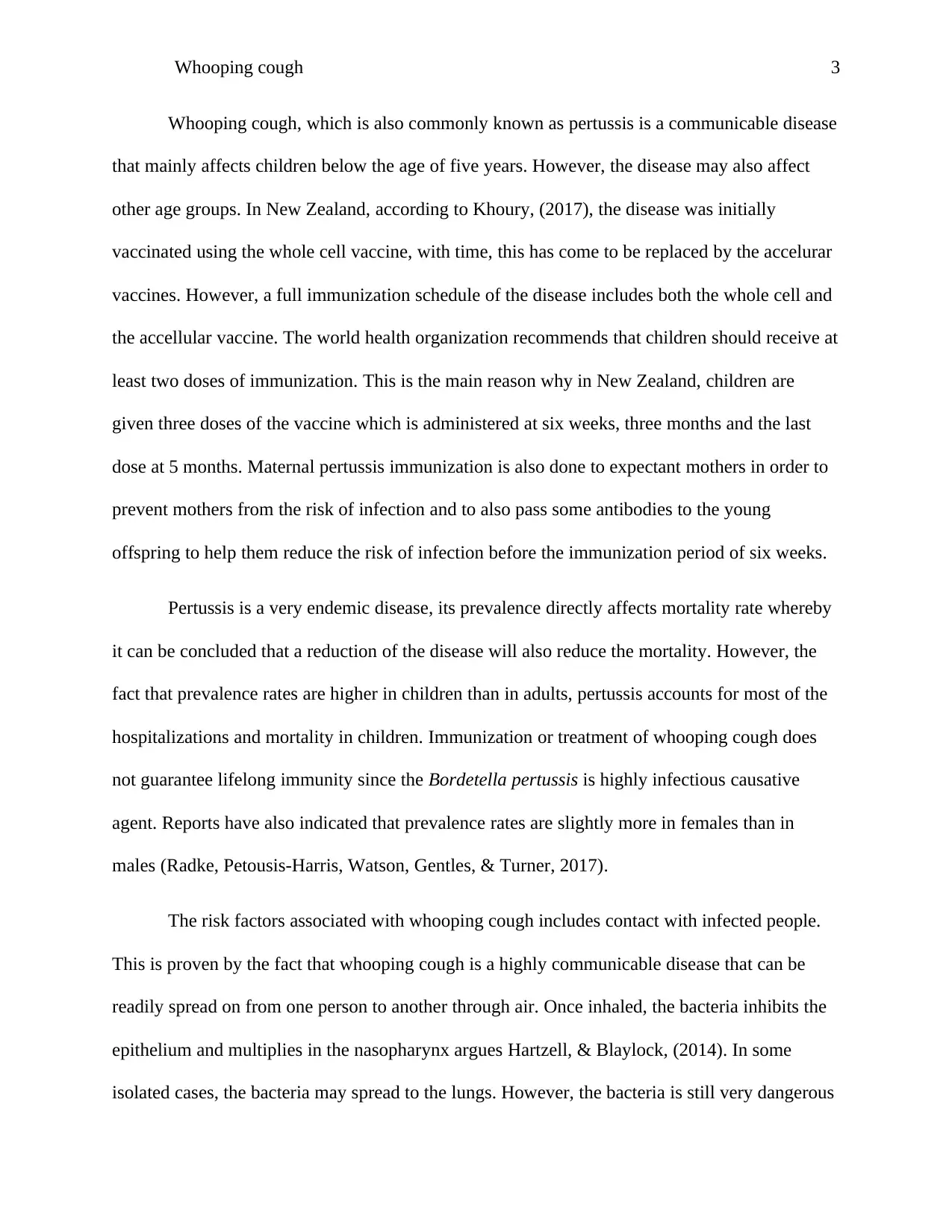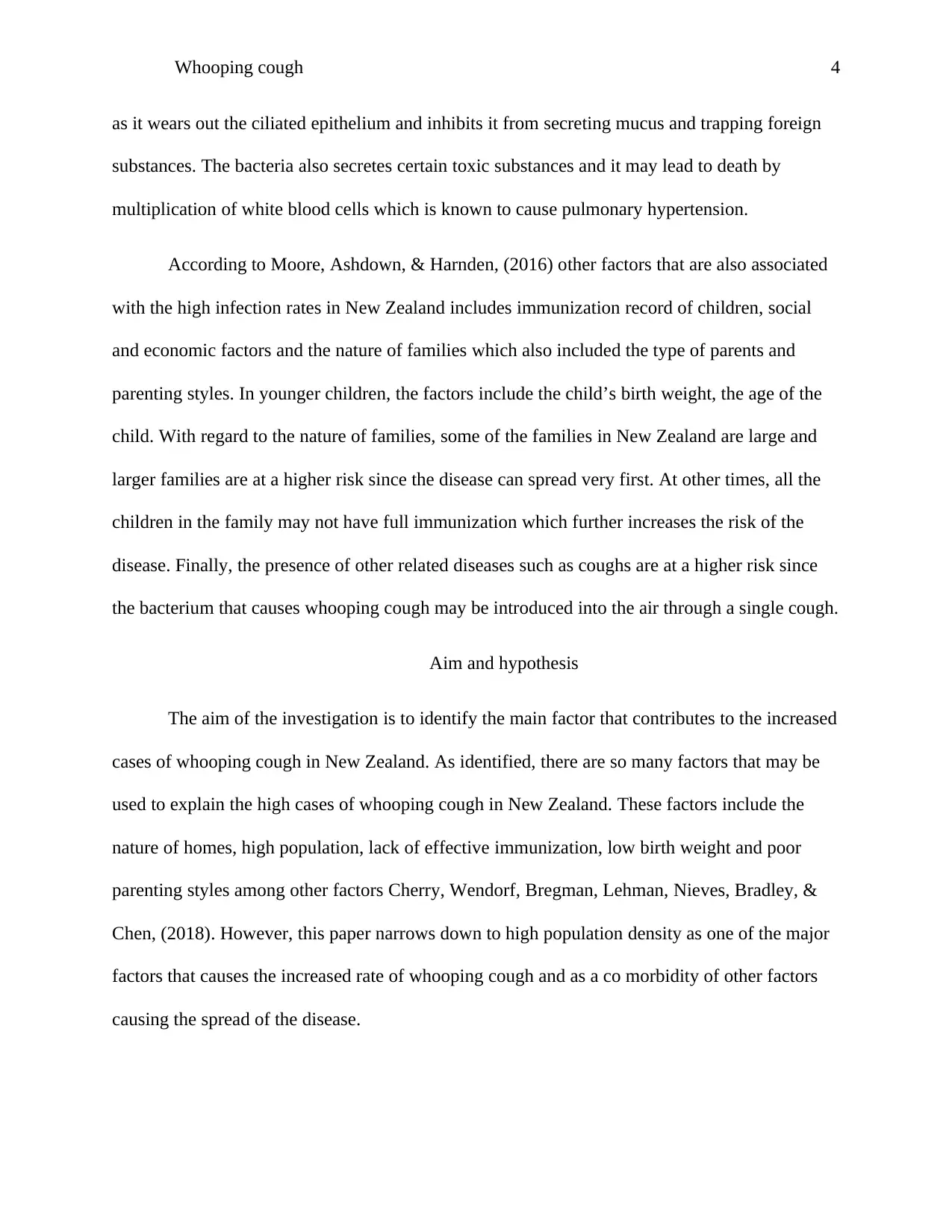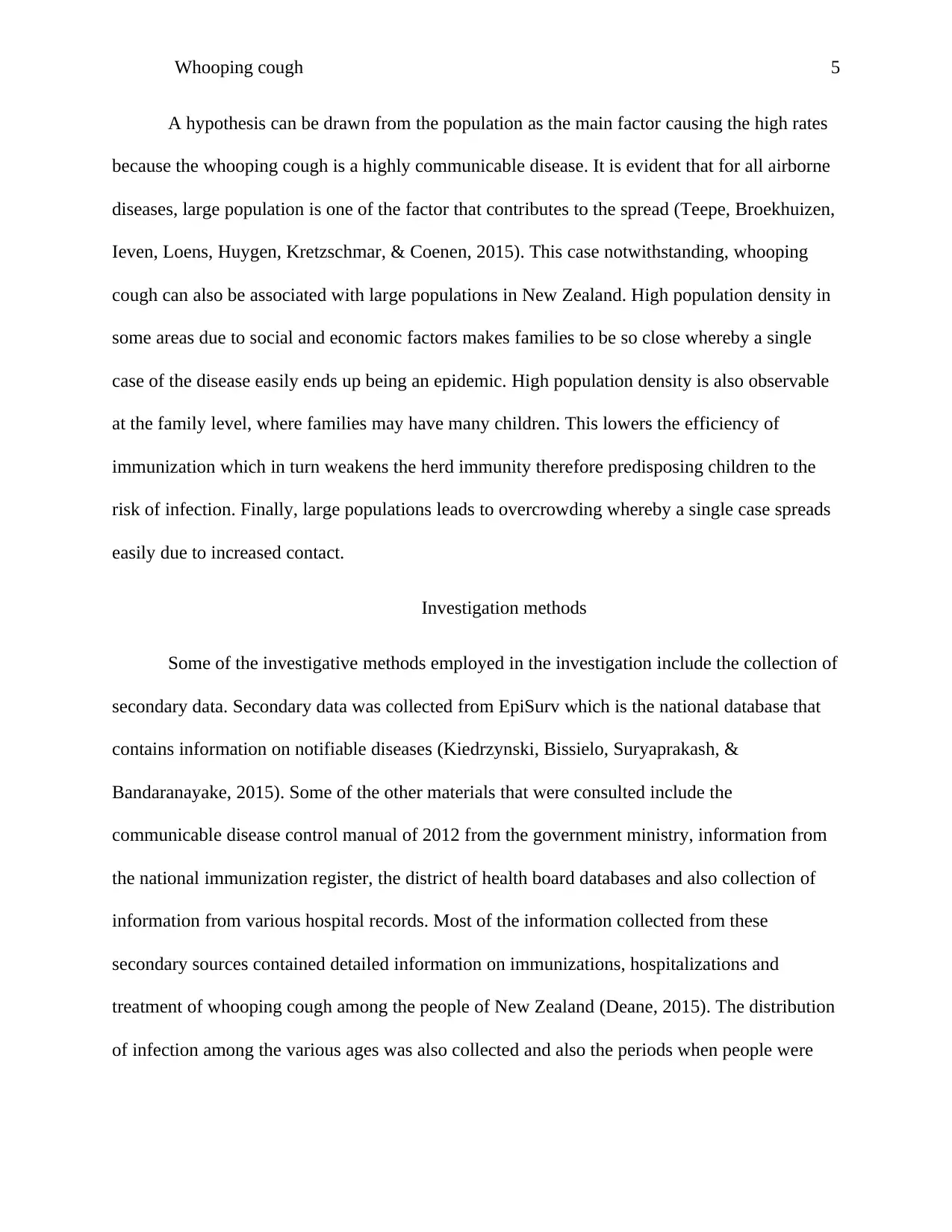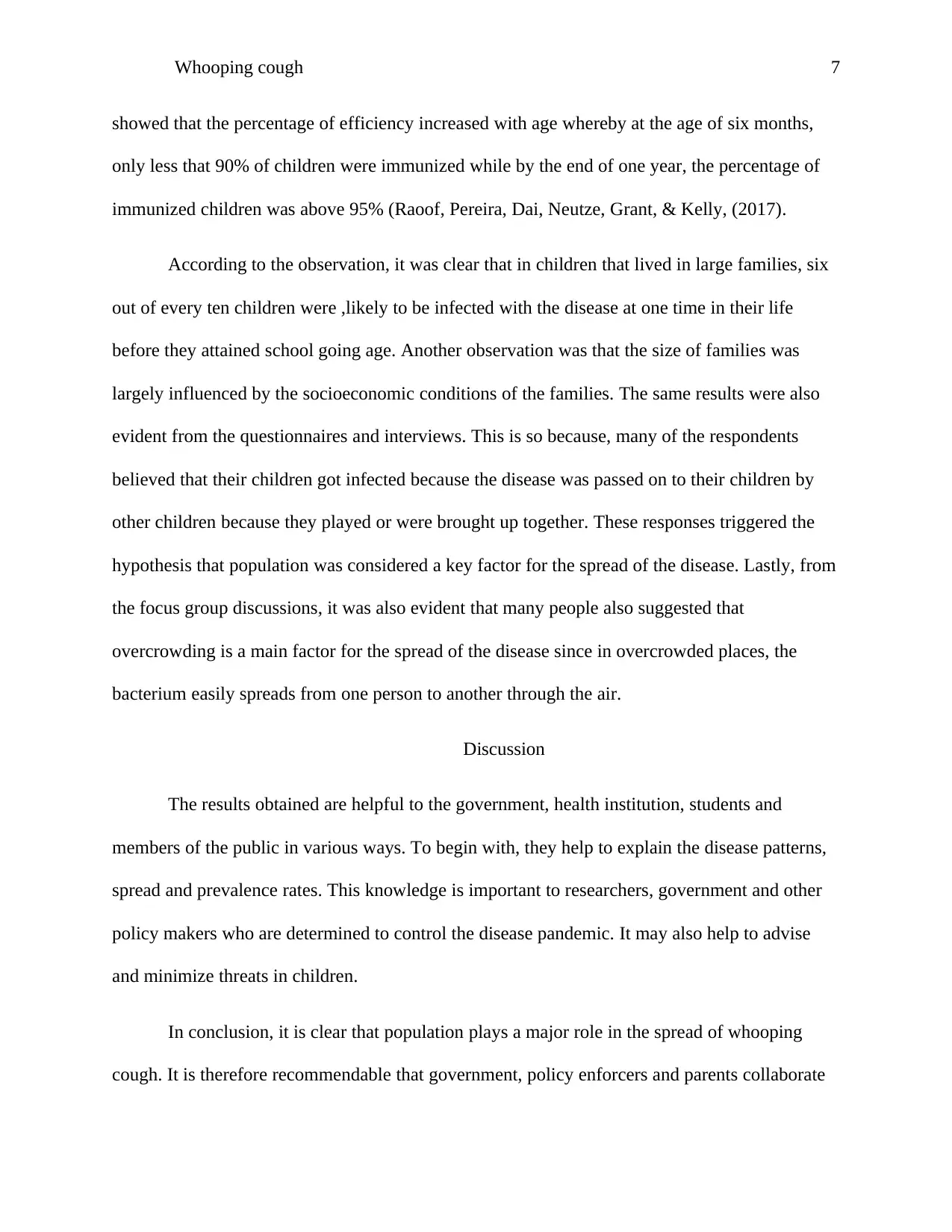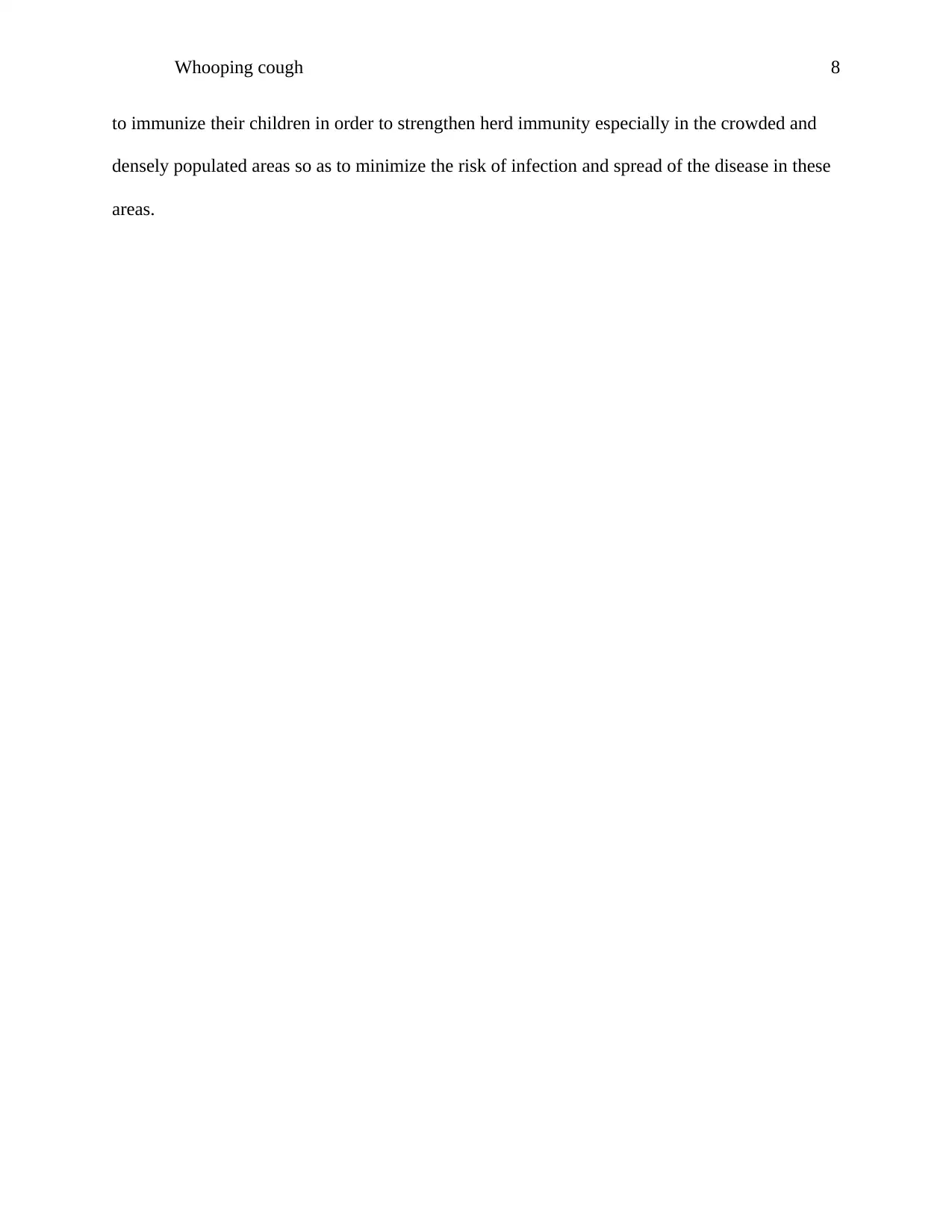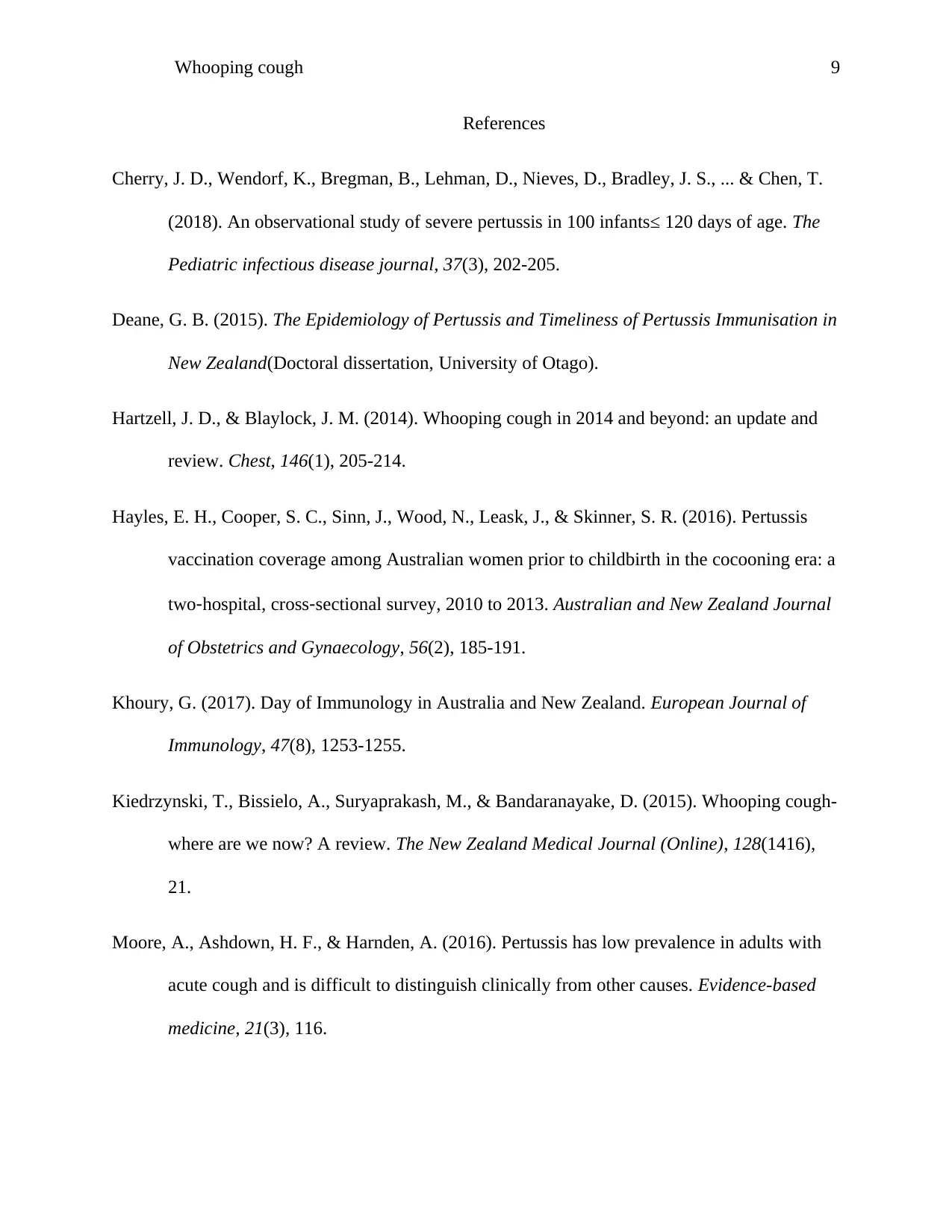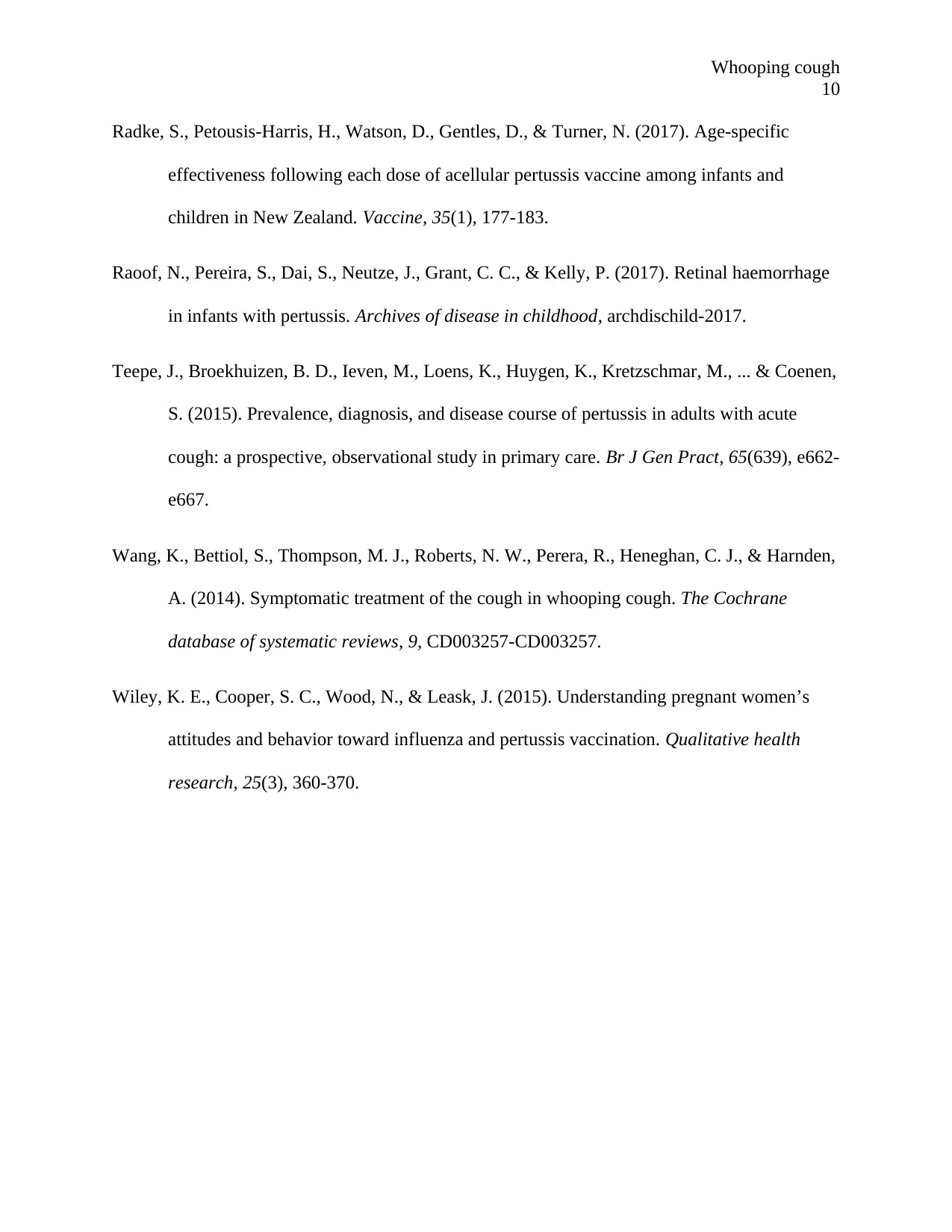Whooping Cough: Prevalence, Factors and Control Measures in New Zealand
VerifiedAI Summary
This report focuses on whooping cough as one of the most contagious and highly prevalent disease in New Zealand. The main symptoms include a prolonged cough with a whooping sound or gasping for breath. The disease is mainly controlled through vaccination but it can still be treated. The investigation identifies high population density as the main factor that contributes to the increased cases of whooping cough in New Zealand. The report recommends that government, policy enforcers and parents collaborate to immunize their children in order to strengthen herd immunity especially in the crowded and densely populated areas so as to minimize the risk of infection and spread of the disease in these areas.
![[object Object]](/_next/static/media/star-bottom.7253800d.svg)
![[object Object]](/_next/static/media/star-bottom.7253800d.svg)
